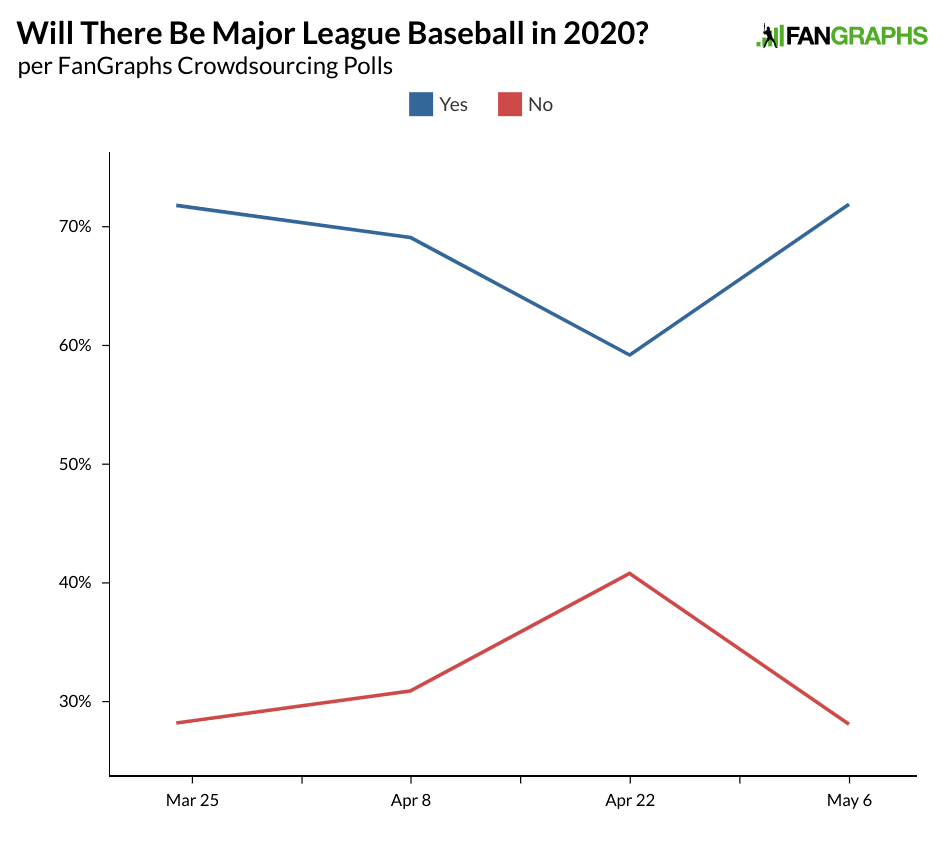Parsing MLB’s Claim of a $4 Billion Loss
Last week, MLB presented documents to the player’s union regarding the financial implications of playing the 2020 season without fans. In an exclusive report, the Associated Press has revealed a considerable amount of the contents of those disclosures. The main takeaways are in the title — “MLB projects $640K per game loss with no fans” — and the third paragraph, which reads:
Teams say the proposed method of salvaging a season delayed by the coronavirus pandemic would still cause a $4 billion loss and would give major league players 89% of revenue.
That $4 billion figure was echoed by Commissioner Rob Manfred on CNN on Friday, except that he indicated in that interview those would be the losses if no season is played. Given that these documents are an attempt to convince the MLPBA to take less money and to put public opinion on the side of the owners against the players, it is fair to take these figures with a bit of a grain of salt. Let’s try to work through the numbers and answer some of the questions raised by the information in the presentation as reported in the AP piece.
First, the big question.
Are the owners going to lose $4 billion?
No. At least, they won’t if games are played. There’s a graph in the AP piece that shows team-by-team losses from an 82-game schedule played with no fans in the stands. The losses range from $312 million for the Yankees down to $84 million for the Tigers. The total losses come to around $4.4 billion, an average of $147 million per team and a median of $135 million. But this figure is misleading as it does not include MLB’s estimate of central revenues, which amount to $1.35 billion. Even taking MLB at its word, the losses immediately move down to $3 billion.
And depending on how revenues and costs are interpreted, the losses might be considerably lighter. First, there’s the issue of amateur spending. In the March agreement, the players agreed to let the owners defer about $425 million in spending to future years, but that $425 million is still included in the loss figure for this year. Read the rest of this entry »

